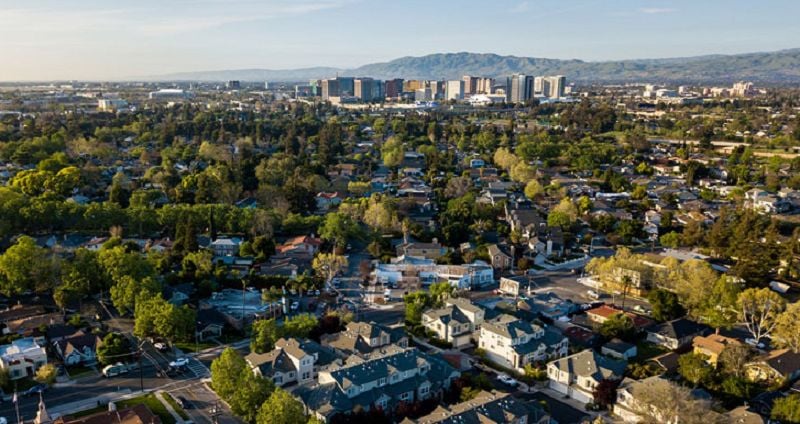The 30 Best Places to Live in Kansas: Top Cities and Towns

Kansas offers residents a unique combination of affordable living costs, strong community values, and diverse geographic landscapes ranging from rolling prairies to gentle hills.
The state’s cities and towns provide excellent educational opportunities, low crime rates, and a slower pace of life that appeals to families, young professionals, and retirees alike.
This comprehensive guide examines thirty communities across Kansas that consistently rank among the state’s most desirable places to call home, from affluent suburbs in the Kansas City metropolitan area to vibrant college towns and thriving regional centers.
Each location offers distinct advantages in terms of housing markets, local amenities, schools, and economic opportunities that contribute to quality of life for residents.
Here are the 30 best places to live in Kansas:
30. McPherson
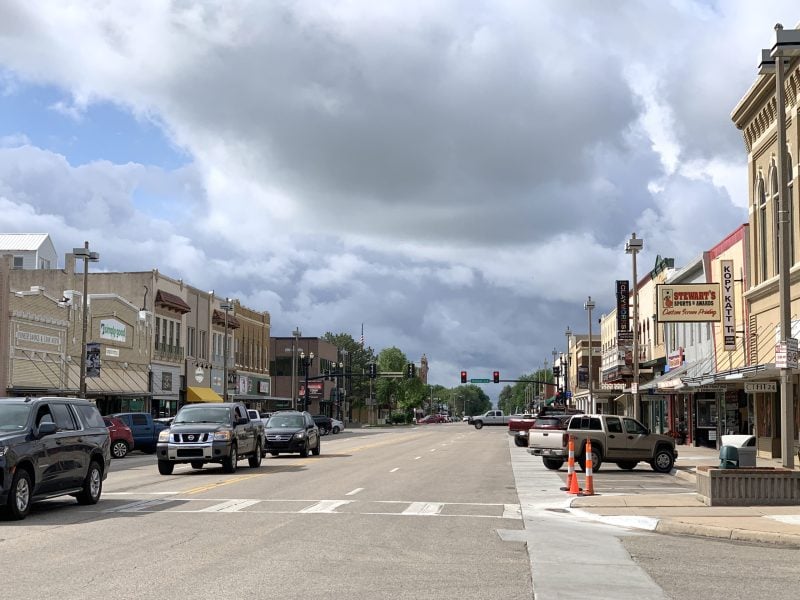
McPherson stands out as one of Kansas’s safest communities with a crime rate of just 4 out of 100. This small city of approximately 13,000 residents offers the charm of small-town living without sacrificing essential amenities.
The cost of living remains below both state and national averages. Housing costs are particularly attractive, with home prices below Kansas’s average of $185,150.
The local economy provides stable employment opportunities across various sectors. The poverty rate sits at 10.8%, which is 23% lower than the national average.
Residents enjoy access to quality public schools and local amenities. The city combines small-town atmosphere with convenient access to larger metropolitan areas when needed.
McPherson’s location in central Kansas provides easy access to both urban centers and rural recreation opportunities.
29. El Dorado
El Dorado ranks as the 7th best place to live out of 541 Kansas cities according to BestPlaces livability index. The city scores high for its low crime rate and affordable cost of living.
With a population of 12,976 residents, El Dorado serves as the county seat of Butler County. The cost of living is 15% lower than the national average, making it attractive for budget-conscious residents.
Many residents commute 30 miles west to Wichita for work while enjoying El Dorado’s small-town atmosphere. The city offers outdoor recreation opportunities including hunting and access to Kansas’ seventh-largest lake.
Home prices in El Dorado are below the state average of $185,150. The typical household earns $41,467 annually, which is lower than the national median of $67,500.
28. Newton
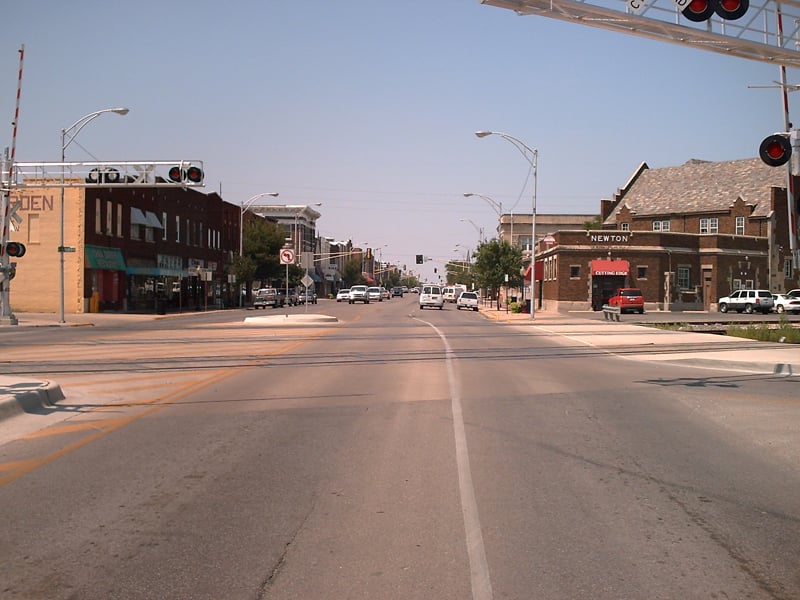
Newton serves as a stable mid-sized community in south-central Kansas with a population of approximately 18,846 residents. The city offers a lower cost of living compared to many areas across the United States.
The poverty rate stands at 10.8%, which is 23% below the national average. However, the typical household income of $56,729 falls short of the national median of $67,500.
Housing options vary significantly throughout different neighborhoods in Newton. The market reflects this disparity through varying home values across the city’s residential areas.
Newton provides residents with basic amenities and services typical of Kansas communities. The city maintains its appeal through affordable living costs and a manageable community size.
Safety levels and quality of life indicators generally align with expectations for similar-sized Kansas towns. Newton continues to attract those seeking small-city living in the Midwest.
27. Hutchinson
Hutchinson, known as “Salt City,” is located in Reno County with a population of approximately 40,000 residents. The city offers a suburban feel where most residents own their homes.
Downtown Hutchinson features historic homes and a revitalized downtown area that attracts residents seeking character and walkability. The Hyde Park Area stands out for its well-maintained homes and established neighborhoods.
College Grove appeals to families due to its proximity to Hutchinson Community College. The Faris Elementary Area provides family-friendly living with access to good schools.
The city maintains numerous parks throughout its neighborhoods. Public schools in Hutchinson perform above average compared to state standards.
Hutchinson supports both families and young professionals with its mix of amenities and small-town atmosphere. The community tends to lean conservative politically while maintaining an active arts and cultural scene that adds vibrancy to daily life.
26. Dodge City
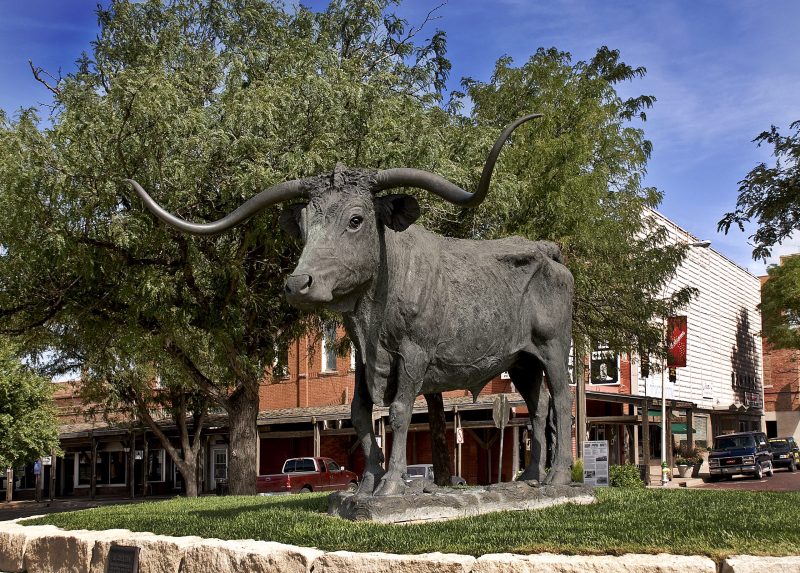
Dodge City sits in southwestern Kansas with a population of approximately 27,652 residents. The city offers a sparse suburban feel where most residents own their homes.
Home prices in Dodge City remain significantly below Kansas’s state average of $185,150. This affordability makes homeownership accessible for many families and individuals.
The city maintains its rich western heritage through excellent museums and galleries. Popular annual events celebrate this historical connection throughout the year.
Dodge City attracts many families who appreciate the moderate political climate. The community provides a balance between small-town living and modern amenities.
Ford County serves as home to Dodge City, positioning it strategically in the region. The location offers residents access to both local attractions and nearby metropolitan areas when needed.
25. Great Bend
Great Bend serves as the county seat of Barton County with a population of 14,596 residents. The city offers a sparse suburban atmosphere where most residents own their homes.
Great Bend ranks among the top five small cities in Kansas for healthcare access, education, and job opportunities. The city provides residents with quality of life amenities that contribute to its strong regional reputation.
Housing costs in Great Bend remain below the Kansas state average of $185,150. This affordability factor makes homeownership accessible for many families in the area.
The community attracts families seeking a conservative-leaning environment with small-town values. Great Bend combines rural Kansas charm with essential urban services and amenities for daily living.
24. Salina
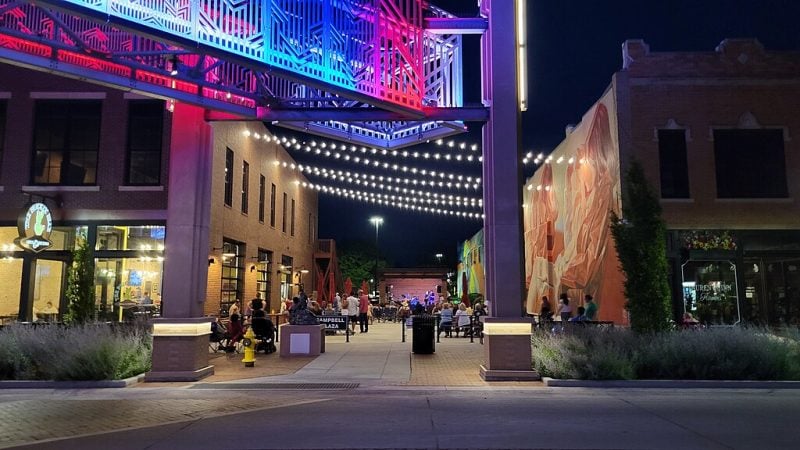
Salina is a thriving community of 46,432 residents located in Saline County along Interstate 70. The city offers residents a sparse suburban feel with most people owning their homes.
The poverty rate stands at 11.6%, which is 17% lower than the national average. However, the typical household earns $49,870 annually, below the national median of $67,500.
Downtown Salina features a historic district with ongoing revitalization efforts. The area includes cultural attractions like the Stiefel Theatre and diverse dining and shopping options.
Salina provides numerous parks and recreational opportunities. The East Crawford Recreation Area sits near Indian Rock Park and Kenwood Park, offering outdoor activities for residents.
The public schools in Salina rank above average, making it attractive to families. Many young professionals also choose to live here, and residents tend to lean conservative politically.
23. Junction City
Junction City sits in the heart of Kansas’s Flint Hills region with a population of approximately 23,000 residents. The city ranks #42 among the best places to live in Kansas.
Home to Fort Riley Army Base, Junction City attracts military families and young professionals. The community offers a dense suburban feel with most residents choosing to rent rather than own homes.
Housing costs remain affordable, with home prices below the state average of $185,150. This makes Junction City accessible for first-time buyers and growing families.
The city ranks 8th out of 208 places for diversity in Kansas. Public schools perform above average, contributing to its family-friendly reputation.
Junction City combines suburban amenities with rural charm. Residents enjoy moderate political views and a stable community atmosphere shaped by its military presence.
22. Hays
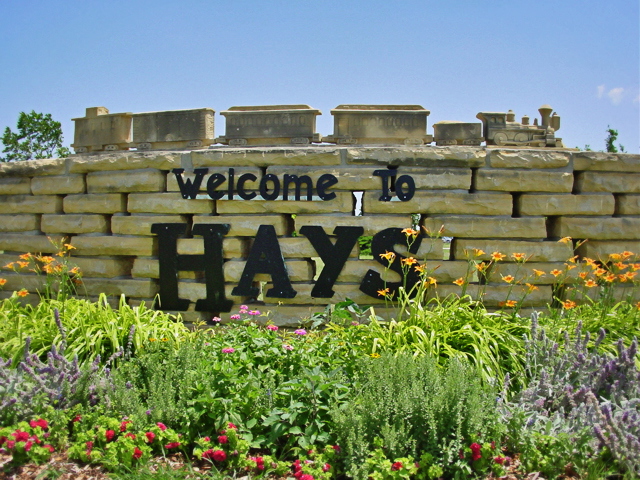
Hays serves as the gateway to the High Plains region of Kansas. The city has a population of 20,855 residents and sits in Ellis County.
The community offers several cultural attractions including the Fort Hays State Historic Site. The Sternberg Museum of Natural History provides educational exhibits and events for visitors.
Hays has a median household income of $52,135, which falls below the national median of $67,500. The poverty rate stands at 15.3%, approximately 9% higher than the national average.
The city’s neighborhoods vary significantly in quality and home values. Housing options range across different price points throughout the area.
Hays maintains its connection to Old West history while providing modern amenities. The city combines historical significance with contemporary living opportunities for residents seeking a smaller Kansas community.
21. Emporia
Emporia is a city in Lyon County with a population of approximately 24,000 residents. The community offers a dense suburban atmosphere where most residents own their homes.
The city provides numerous amenities including parks and recreational facilities. Young professionals and families make up a significant portion of the population.
Emporia’s median household income is $43,481, which falls below the national average of $67,500. The poverty rate stands at 19.6%, higher than the national benchmark.
The city receives a livability score of 76 out of 100, ranking in the 90th percentile among American cities. Housing quality varies significantly across different neighborhoods within Emporia.
Residents enjoy access to various bars and entertainment options throughout the city. The political climate tends to lean conservative based on local voting patterns.
20. Pittsburg
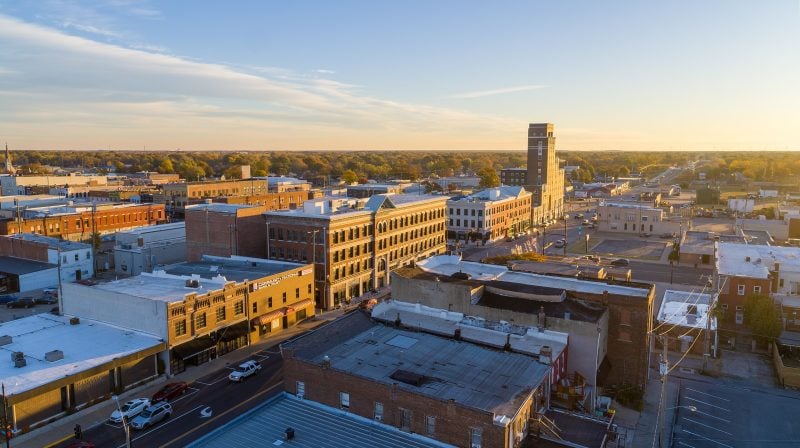
Pittsburg offers residents a blend of small-town charm and city amenities in Crawford County. The city has a population of 20,606 and maintains a dense suburban atmosphere.
Most residents rent their homes, making it accessible for families and young professionals. The community attracts a diverse population that continues to grow each year.
Housing costs remain below the Kansas state average of $185,150. This affordability contributes to Pittsburg’s appeal for those seeking quality living at reasonable prices.
The public schools perform above average, though the district ranks 48th out of 110 places statewide for educational quality. Families can expect decent educational opportunities for their children.
Pittsburg ranks 15th among Kansas cities for overall livability according to regional assessments. The local economy supports growing job and housing markets throughout the area.
19. Tonganoxie
Tonganoxie is a small city in Leavenworth County with a population of 5,195 residents. The community receives high marks for safety and affordability from residents and ranking services.
The city earns an overall rating of 8.2 out of 10 from BestPlaces rankings. Crime rates remain very low, contributing to its family-friendly reputation.
Housing costs in Tonganoxie exceed the Kansas state average of $185,150. However, the overall cost of living stays reasonable compared to larger metropolitan areas.
The city receives a livability score of 70 out of 100 based on factors including employment opportunities and health metrics. Tonganoxie ranks 3,698 out of 18,043 nationally for best places to buy a house.
Located within commuting distance of Kansas City, Tonganoxie offers small-town living with access to urban amenities. The area features rolling prairies typical of eastern Kansas.
18. Louisburg

Louisburg is a small Kansas town with a population of 4,865 residents. The community offers a friendly, small-town atmosphere that welcomes newcomers and families.
The town ranks 23rd out of 110 Kansas places for public schools. Local schools provide quality education options for families with children.
Home prices in Louisburg exceed the Kansas state average of $185,150. The higher costs reflect the area’s desirability among residents seeking suburban living.
Outdoor recreation thrives near Hillsdale State Park and Hillsdale Lake. Residents enjoy hiking trails, fishing, and water activities throughout the year.
The famous Louisburg Cider Mill attracts visitors, especially during fall season. Local businesses, wineries, and parks add to the community’s appeal.
Louisburg’s location provides convenient access to Overland Park and Kansas City. This proximity allows residents to enjoy small-town living while maintaining connections to larger metropolitan areas.
17. Edwardsville
Edwardsville sits as a suburb of Kansas City in Wyandotte County with a population of approximately 4,700 residents. The city offers a sparse suburban feel where most residents own their homes.
The community attracts many families seeking a quieter lifestyle within the Kansas City Metropolitan Area. Public schools in Edwardsville rank above average, making it appealing for families with children.
Home prices in Edwardsville align closely with Kansas state averages around $185,150. The poverty rate stands at 7.2%, which is significantly lower than the national average.
Typical households earn about $65,650 annually, slightly below the national median. Nearly 33% of households earn less than $50,000 per year.
Residents tend to hold moderate political views and enjoy the benefits of suburban living while maintaining access to Kansas City amenities. The area provides a balance between small-town atmosphere and metropolitan convenience.
16. Spring Hill
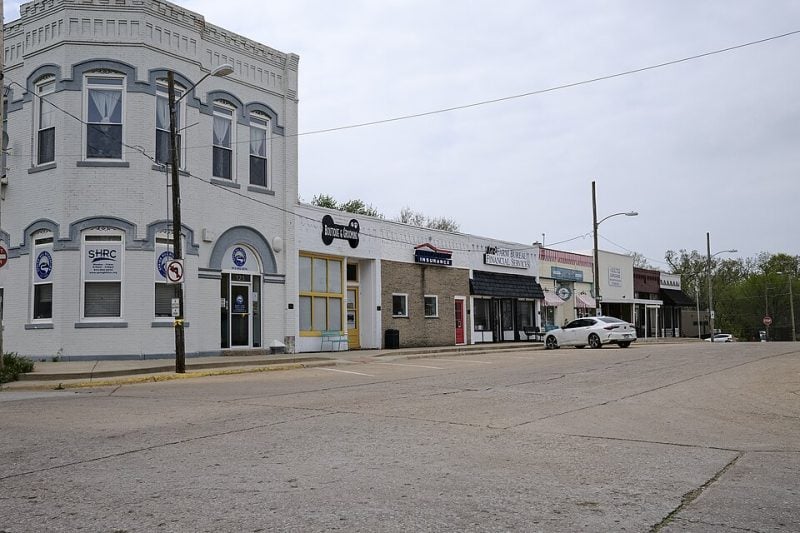
Spring Hill sits in Johnson County with a population of 8,691 residents. The town offers a sparse suburban atmosphere that attracts families and young professionals.
Most residents own their homes in this community. Home prices exceed the Kansas state average of $185,150, reflecting the area’s desirability.
The town maintains low crime rates and provides quality educational opportunities. Residents enjoy access to recreational activities and community events.
Spring Hill faces some limitations with public transportation options. Shopping diversity is also more restricted compared to larger cities.
The community tends to lean conservative politically. Young professionals find the town appealing for its balance of affordability and suburban amenities.
Spring Hill ranks among Kansas’s better places to live due to its combination of safety, education quality, and community spirit.
15. Mission
Mission ranks as the third-best city in Kansas with an impressive livability score of 78. This Kansas City suburb houses 9,928 residents in Johnson County.
The city offers an urban-suburban blend that attracts diverse residents. Most people rent their homes rather than buy, making it accessible for various income levels.
Mission maintains a strong economy with an unemployment rate of 3.8%. This figure falls below both state and national averages, indicating robust job opportunities.
The typical household earns $64,703 annually. The poverty rate stands at 9.5%, which is 32% lower than the national average.
Residents enjoy numerous restaurants, coffee shops, and parks throughout the area. The city provides excellent walkability and community amenities.
Home prices exceed the Kansas state average of $185,150. This reflects the desirability and quality of neighborhoods within Mission.
14. Leavenworth
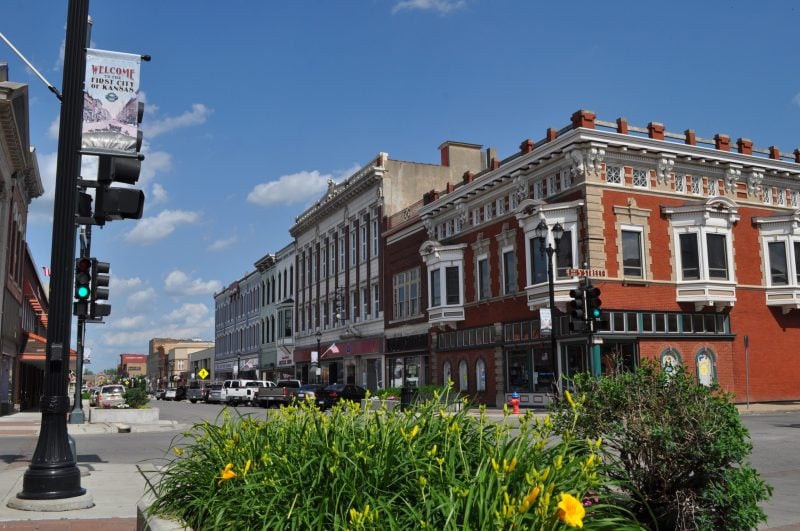
Leavenworth stands out as one of Kansas’s premier places to live, with a population of 37,176 residents. The city offers a sparse suburban atmosphere where most residents own their homes.
Located in Leavenworth County, the community provides abundant green spaces with numerous parks throughout the area. Wyandotte Lake serves as a notable recreational destination for outdoor activities.
The city maintains home prices similar to Kansas’s state average of $185,150, making it accessible for many buyers. Residents benefit from proximity to shopping at Legends Outlets Kansas City and diverse dining options including Main Street Cafe.
Leavenworth sits within a large metropolitan area characterized by rivers and rolling plains terrain. The region’s economy relies primarily on manufacturing and agriculture industries, providing stable employment opportunities for residents.
13. Westwood
Westwood is a small Kansas City suburb in Johnson County with approximately 1,851 residents. The community offers a rural atmosphere while providing access to metropolitan amenities.
This compact city ranks highly for quality of life factors. Westwood receives an A+ grade for amenities and holds the #4 position for amenities per capita statewide.
The suburb earns strong safety ratings with a B+ grade for crime and safety. Residents also benefit from an A- cost of living rating, making it financially accessible.
Westwood ranks 2nd among Kansas suburbs for best places to live. The city also places 2nd out of 110 locations for public schools in the state.
Most residents own their homes in this community. The area features numerous parks and outdoor recreational opportunities for families and individuals.
12. Blue Valley
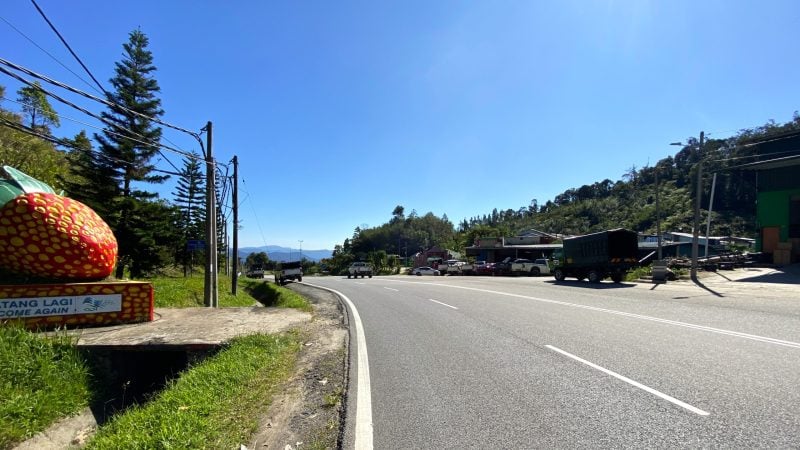
Blue Valley stands out as one of Kansas’s most livable communities. The area consistently earns top rankings for its exceptional quality of life and strong local amenities.
The Blue Valley School District represents a major draw for families. This district holds the number one ranking in Kansas and places within the top 1% of districts nationwide.
Housing remains affordable compared to national averages. The median home value of $203,200 sits well below the US median of $338,100, making homeownership accessible.
Crime rates stay low throughout the community. Residents benefit from a safe environment that contributes to the area’s family-friendly reputation.
The local economy provides stability and opportunities. Combined with excellent schools and reasonable housing costs, Blue Valley offers residents a balanced lifestyle in suburban Kansas.
11. Basehor
Basehor is a small city in Leavenworth County with a population of approximately 6,225 residents. The community sits within the Kansas City metropolitan area, offering suburban living with access to larger urban amenities.
The city demonstrates strong economic indicators compared to national averages. The typical household earns $84,906 annually, which exceeds the national median of $67,500.
Basehor maintains a low poverty rate of 7.2%, representing 49% below the national average. This economic stability contributes to the community’s overall quality of life.
The city receives a livability score of 67 out of 100 according to BestPlaces ratings. This assessment considers factors including crime rates, cost of living, and available amenities.
Basehor provides residents with a balance of small-town atmosphere and metropolitan accessibility. The location allows for convenient commuting to Kansas City while maintaining a quieter residential environment.
10. Gardner
Gardner is a growing suburb in the Kansas City metropolitan area with a population of approximately 23,300 residents. The city sits in Johnson County and offers residents a balance of small-town atmosphere with metropolitan accessibility.
The community maintains lower poverty rates at 6%, significantly below the national average. Median household income reaches $78,193, exceeding the national median by over $10,000.
Housing costs in Gardner run higher than the Kansas state average of $185,150. The city provides various residential neighborhoods that accommodate different lifestyle preferences and family needs.
Gardner features numerous outdoor recreational opportunities including walking trails and parks. The location provides convenient access to larger cities like Olathe and Lawrence for additional amenities and services.
Local schools receive positive ratings from residents. The community emphasizes safety and maintains well-regarded neighborhood environments for families raising children.
9. Manhattan
Manhattan, known as “The Little Apple,” serves as home to Kansas State University and hosts a population of 53,951 residents. The city creates an urban-suburban mix that appeals to diverse demographics.
Riley County’s college town offers numerous bars, parks, and recreational opportunities. Most residents choose to rent their homes, reflecting the strong student population influence.
Home prices in Manhattan exceed the state average of $185,150. The real estate market remains active due to consistent demand from university affiliates and families.
Northview stands out as a family-friendly neighborhood with varied housing styles. The area provides convenient access to schools and parks for residents with children.
Downtown and College Hill offer urban convenience for those preferring city living. Grand Mere provides a more suburban atmosphere for families seeking quieter environments.
The local economy relies heavily on education and healthcare sectors. Manhattan’s location places it 50 miles west of Topeka and 120 miles from Kansas City.
8. Wichita
Wichita stands as one of Kansas’s most livable cities with a population exceeding 389,000 residents. The city ranks among the top 100 places to live nationally according to Livability rankings.
Affordability makes Wichita attractive to families and professionals alike. Housing costs remain reasonable compared to other major metropolitan areas across the country.
The city offers extensive entertainment options with thirty museums and hundreds of attractions throughout the area. Residents enjoy access to eight distinct shopping districts and dozens of theaters for cultural activities.
Wichita provides abundant outdoor recreation opportunities through numerous parks and trail systems. The Mid-America All-Indian Center showcases the region’s vibrant arts scene for culture enthusiasts.
Employment opportunities remain strong across various industries. The city’s central location provides convenient access to other major markets while maintaining its plains community character.
7. Prairie Village
Prairie Village stands out as one of Kansas’s most desirable suburban communities. This Johnson County city maintains a population of approximately 22,937 residents across 6.7 square miles.
The community offers a sparse suburban atmosphere where most residents own their homes. Located near Kansas City, it provides easy access to metropolitan amenities while maintaining small-town charm.
Prairie Village features numerous restaurants, coffee shops, and parks throughout the area. Residents enjoy recreational activities at Falcon Valley Golf Club and shopping opportunities at the Village Shops.
Housing prices in Prairie Village exceed the Kansas state average of $185,150. The higher cost reflects the area’s desirability and quality of life.
The city has earned recognition from various organizations, including rankings as one of the top suburban cities in the Kansas City region. Prairie Village combines residential appeal with convenient location benefits.
6. Shawnee
Shawnee stands as one of Kansas’s premier suburban communities with a population of approximately 68,000 residents. The city consistently earns recognition from multiple ranking organizations as among the best places to live in the state.
Located in Johnson County, Shawnee offers residents a sparse suburban atmosphere where most people own their homes. The city provides convenient access to Kansas City’s amenities while maintaining its own distinct character.
The community boasts a strong economic foundation with a median household income of $88,941, significantly above the national average. The poverty rate remains low at 5.5%, reflecting the area’s economic stability.
Shawnee features numerous recreational opportunities including parks, coffee shops, and entertainment venues. The city’s proximity to both Kansas City and Lawrence expands access to additional cultural and recreational activities for residents.
5. Lawrence
Lawrence stands out as one of Kansas’s premier college towns, anchored by the University of Kansas. The city offers a vibrant blend of academic energy and family-friendly amenities that attract residents of all ages.
The downtown district provides a pedestrian-friendly environment with unique local shops and dining options. Mass Street serves as the heart of the community, featuring everything from independent bookstores to specialty retailers.
Housing options cater to diverse needs, with many residents choosing to rent rather than buy. The city maintains a dense suburban feel while preserving plenty of green spaces and parks throughout the community.
Lawrence’s economy benefits from the stability that comes with being a university town. Young professionals find ample opportunities alongside the established academic community.
The city’s location along the Kansas River adds natural beauty to the urban landscape. Cultural attractions, coffee shops, and entertainment venues create an active social scene year-round.
4. Olathe
Olathe stands as Kansas’s fourth-largest city with approximately 136,000 residents. The city has experienced remarkable growth, with its population nearly doubling since 2000.
Located just 23 miles southeast of Kansas City, Olathe offers convenient access to metropolitan amenities while maintaining its community character. The city received its name from early settlers who were impressed by the surrounding green hills.
Olathe maintains a notably low crime rate, contributing to its appeal for families and professionals. The city provides numerous amenities and attractions that enhance residents’ quality of life.
The community has earned recognition as one of the best places to live in the United States. Despite rapid growth, Olathe has preserved its tight-knit community atmosphere and welcoming environment for new residents.
3. Lenexa
Lenexa stands out as one of Kansas’s premier suburban communities. The city serves as part of the Kansas City metropolitan area in Johnson County.
With a population of nearly 58,000 residents, Lenexa offers a dense suburban atmosphere. Most residents own their homes rather than rent.
The city excels in key livability metrics. It scores an 8 out of 10 for job market opportunities with strong employment access and security.
Lenexa’s median household income reaches $90,487 annually. This exceeds the national median by over $20,000.
The poverty rate sits at just 5 percent. This figure represents 64 percent below the national average.
Residents enjoy abundant green spaces throughout the community. The city maintains numerous parks for recreation and outdoor activities.
Money magazine recognized Lenexa as the best place to live in Kansas. The publication evaluated economic performance and educational quality in its rankings.
2. Overland Park
Overland Park consistently ranks among the top places to live in America. Multiple organizations have recognized the city for its exceptional quality of life.
The city placed seventh on Livability.com’s 2024 Best Places to Live ranking. Fortune magazine also named Overland Park in their top 10 best places for families.
Overland Park offers residents excellent schools through the Blue Valley school district. The area provides strong job opportunities and maintains a robust local economy.
Families appreciate the city’s numerous parks and recreational spaces. The community features a growing arts scene and local brewery culture.
Safety remains a key advantage for residents. The median home value sits around $413,000, making it relatively affordable compared to similar communities.
The city combines suburban amenities with proximity to Kansas City. Residents enjoy access to quality healthcare and family-friendly activities throughout the area.
1. Leawood
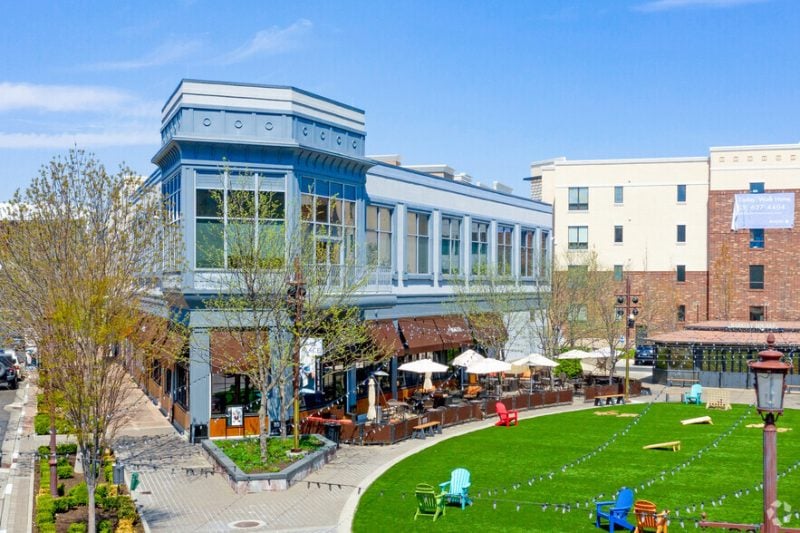
Leawood stands out as Kansas’s premier place to live. This Johnson County suburb of Kansas City boasts a population of approximately 34,000 residents.
The city offers a sparse suburban feel with well-planned neighborhoods. Most residents own their homes in this affluent community.
Leawood’s economic strength is evident in its household income of $156,538, more than double the national median. The poverty rate sits at just 1.4%, significantly below national averages.
Educational excellence defines the area with top-rated schools throughout the district. Low unemployment rates contribute to the community’s stability.
Residents enjoy numerous restaurants, coffee shops, and parks within the city limits. The area maintains low crime rates and high quality of life standards.
Leawood has earned recognition from Money magazine as one of America’s best places to live.
Factors That Make Kansas an Attractive Place to Live
Kansas offers residents a combination of low living costs, strong community bonds, abundant natural landscapes, and diverse economic opportunities. The state’s central location and practical advantages make it appealing to families, professionals, and retirees seeking quality of life.
Affordability and Cost of Living
Kansas maintains one of the most affordable cost-of-living indexes in the United States. Housing costs remain significantly below national averages, with median home prices typically 20-30% lower than comparable markets.
Property taxes in Kansas are moderate compared to other states. Most counties maintain reasonable tax rates that support local services without creating excessive financial burden on homeowners.
Key Cost Advantages:
-
Lower housing costs
-
Affordable utilities
-
Reasonable property taxes
-
Lower transportation expenses
Grocery costs and daily expenses remain manageable for most income levels. Gas prices consistently rank among the lower tier nationally due to the state’s central location and energy infrastructure.
Community and Lifestyle
Kansas communities emphasize neighborly connections and civic engagement. Small towns and larger cities both foster environments where residents participate in local events and support community initiatives.
The state’s educational system includes well-regarded public schools and respected universities like the University of Kansas. Many districts maintain strong academic programs with favorable student-to-teacher ratios.
Cultural attractions span from museums and theaters in larger cities to local festivals and historical sites throughout the state. Lawrence particularly stands out as a vibrant college town with active arts and music scenes.
Community Features:
-
Strong school systems
-
Active civic participation
-
Cultural venues and events
-
Family-friendly environments
Access to Nature and Outdoor Activities
Kansas provides extensive outdoor recreation opportunities across its prairies, lakes, and state parks. The state maintains over 25 state parks offering hiking, fishing, camping, and wildlife observation.
Tallgrass Prairie National Preserve protects one of the few remaining tallgrass ecosystems in North America. This unique landscape offers hiking trails and educational programs about native prairie ecology.
Lakes like Milford Lake and Wilson Lake provide boating, swimming, and water sports opportunities. Many communities feature well-maintained parks and recreational facilities for year-round activities.
The state’s relatively flat terrain makes it ideal for cycling and running. Many cities have developed trail systems connecting neighborhoods to parks and commercial areas.
Economic and Job Opportunities
Kansas maintains a diverse economy spanning agriculture, manufacturing, aerospace, and technology sectors. Major employers include Spirit AeroSystems, Cargill, and Koch Industries, providing stable employment across various skill levels.
The state’s central location offers logistical advantages for businesses involved in distribution and transportation. This geographic position continues to attract companies seeking efficient access to national markets.
Agriculture remains economically significant, with opportunities in farming, livestock, and agricultural technology. The sector supports both traditional farming operations and modern agribusiness ventures.
Economic Strengths:
-
Diverse industry base
-
Strategic geographic location
-
Agricultural opportunities
-
Growing technology sector
Unemployment rates typically track below or near national averages. The state government actively supports business development through various incentive programs and workforce development initiatives.
Tips for Choosing the Right Kansas Community
Selecting the ideal Kansas community requires careful evaluation of daily necessities, transportation needs, and essential services. These factors directly impact quality of life and long-term satisfaction with your chosen location.
Assessing Local Amenities and Services
Kansas communities vary significantly in their amenities and service offerings. Urban areas like Wichita and Kansas City provide extensive entertainment options, shopping centers, and cultural attractions. Smaller towns may offer limited dining and retail choices but often feature strong community centers and local events.
Recreation facilities deserve careful consideration. Many Kansas suburbs like Lenexa feature well-maintained parks, walking trails, and community recreation centers. These areas often host annual events that bring residents together and create strong neighborhood bonds.
Shopping accessibility differs between communities. Larger cities provide major retail chains, specialty stores, and diverse dining options within short distances. Rural areas may require longer drives to reach grocery stores, medical facilities, and essential services.
Public services quality varies by municipality. Some communities offer robust library systems, well-maintained public spaces, and efficient municipal services. Others may have limited hours or reduced service levels due to budget constraints.
Considering Commute and Accessibility
Transportation options in Kansas depend heavily on location and personal needs. Most Kansas communities require personal vehicles for daily transportation. Public transit exists primarily in Kansas City and Wichita, with limited service in smaller towns.
Highway access affects daily commuting significantly. Communities near major interstates like I-35 and I-70 provide easier access to employment centers and regional amenities. Rural locations may involve longer commutes on state highways or county roads.
Key transportation factors to evaluate:
-
Distance to major highways
-
Average commute times to work
-
Public transit availability
-
Airport proximity for travel needs
-
Road maintenance quality during winter months
Traffic patterns vary considerably between urban and rural areas. Suburbs in Johnson County may experience rush hour congestion, while smaller towns typically have minimal traffic delays.
Winter driving conditions require consideration throughout Kansas. Communities with better snow removal services and well-maintained roads provide safer winter travel.
Evaluating Education and Healthcare Options
School district quality varies significantly across Kansas communities. Johnson County districts like those serving Leawood and Fairway often rank among the state’s best performers. Rural districts may have smaller class sizes but fewer advanced programs and extracurricular options.
Healthcare access depends on community size and location. Larger cities provide multiple hospitals, specialist clinics, and urgent care facilities. Smaller towns may have limited medical services, requiring travel to regional medical centers for specialized care.
Education considerations include:
-
School district test scores and graduation rates
-
Available extracurricular programs
-
Class sizes and student-teacher ratios
-
Proximity to colleges and universities
Healthcare proximity affects emergency response times and routine care access. Communities near major medical centers like those in Kansas City or Wichita offer more comprehensive services. Rural areas may rely on critical access hospitals with basic services.
Specialist medical care often requires travel to larger cities. Residents should consider distances to cardiology, oncology, and other specialized medical services when choosing communities.




